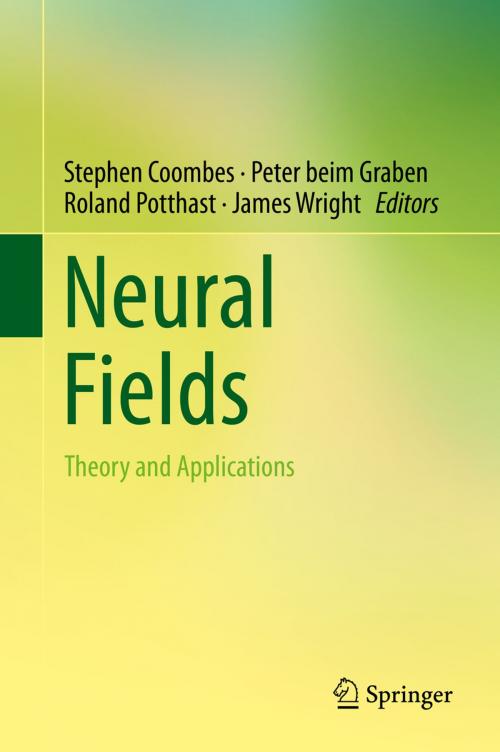Neural Fields
Theory and Applications
Nonfiction, Science & Nature, Science, Biological Sciences, Biophysics, Mathematics, Mathematical Analysis| Author: | ISBN: | 9783642545931 | |
| Publisher: | Springer Berlin Heidelberg | Publication: | June 17, 2014 |
| Imprint: | Springer | Language: | English |
| Author: | |
| ISBN: | 9783642545931 |
| Publisher: | Springer Berlin Heidelberg |
| Publication: | June 17, 2014 |
| Imprint: | Springer |
| Language: | English |
Neural field theory has a long-standing tradition in the mathematical and computational neurosciences. Beginning almost 50 years ago with seminal work by Griffiths and culminating in the 1970ties with the models of Wilson and Cowan, Nunez and Amari, this important research area experienced a renaissance during the 1990ties by the groups of Ermentrout, Robinson, Bressloff, Wright and Haken. Since then, much progress has been made in both, the development of mathematical and numerical techniques and in physiological refinement und understanding. In contrast to large-scale neural network models described by huge connectivity matrices that are computationally expensive in numerical simulations, neural field models described by connectivity kernels allow for analytical treatment by means of methods from functional analysis. Thus, a number of rigorous results on the existence of bump and wave solutions or on inverse kernel construction problems are nowadays available. Moreover, neural fields provide an important interface for the coupling of neural activity to experimentally observable data, such as the electroencephalogram (EEG) or functional magnetic resonance imaging (fMRI). And finally, neural fields over rather abstract feature spaces, also called dynamic fields, found successful applications in the cognitive sciences and in robotics. Up to now, research results in neural field theory have been disseminated across a number of distinct journals from mathematics, computational neuroscience, biophysics, cognitive science and others. There is no comprehensive collection of results or reviews available yet. With our proposed book Neural Field Theory, we aim at filling this gap in the market. We received consent from some of the leading scientists in the field, who are willing to write contributions for the book, among them are two of the founding-fathers of neural field theory: Shun-ichi Amari and Jack Cowan.
Neural field theory has a long-standing tradition in the mathematical and computational neurosciences. Beginning almost 50 years ago with seminal work by Griffiths and culminating in the 1970ties with the models of Wilson and Cowan, Nunez and Amari, this important research area experienced a renaissance during the 1990ties by the groups of Ermentrout, Robinson, Bressloff, Wright and Haken. Since then, much progress has been made in both, the development of mathematical and numerical techniques and in physiological refinement und understanding. In contrast to large-scale neural network models described by huge connectivity matrices that are computationally expensive in numerical simulations, neural field models described by connectivity kernels allow for analytical treatment by means of methods from functional analysis. Thus, a number of rigorous results on the existence of bump and wave solutions or on inverse kernel construction problems are nowadays available. Moreover, neural fields provide an important interface for the coupling of neural activity to experimentally observable data, such as the electroencephalogram (EEG) or functional magnetic resonance imaging (fMRI). And finally, neural fields over rather abstract feature spaces, also called dynamic fields, found successful applications in the cognitive sciences and in robotics. Up to now, research results in neural field theory have been disseminated across a number of distinct journals from mathematics, computational neuroscience, biophysics, cognitive science and others. There is no comprehensive collection of results or reviews available yet. With our proposed book Neural Field Theory, we aim at filling this gap in the market. We received consent from some of the leading scientists in the field, who are willing to write contributions for the book, among them are two of the founding-fathers of neural field theory: Shun-ichi Amari and Jack Cowan.















